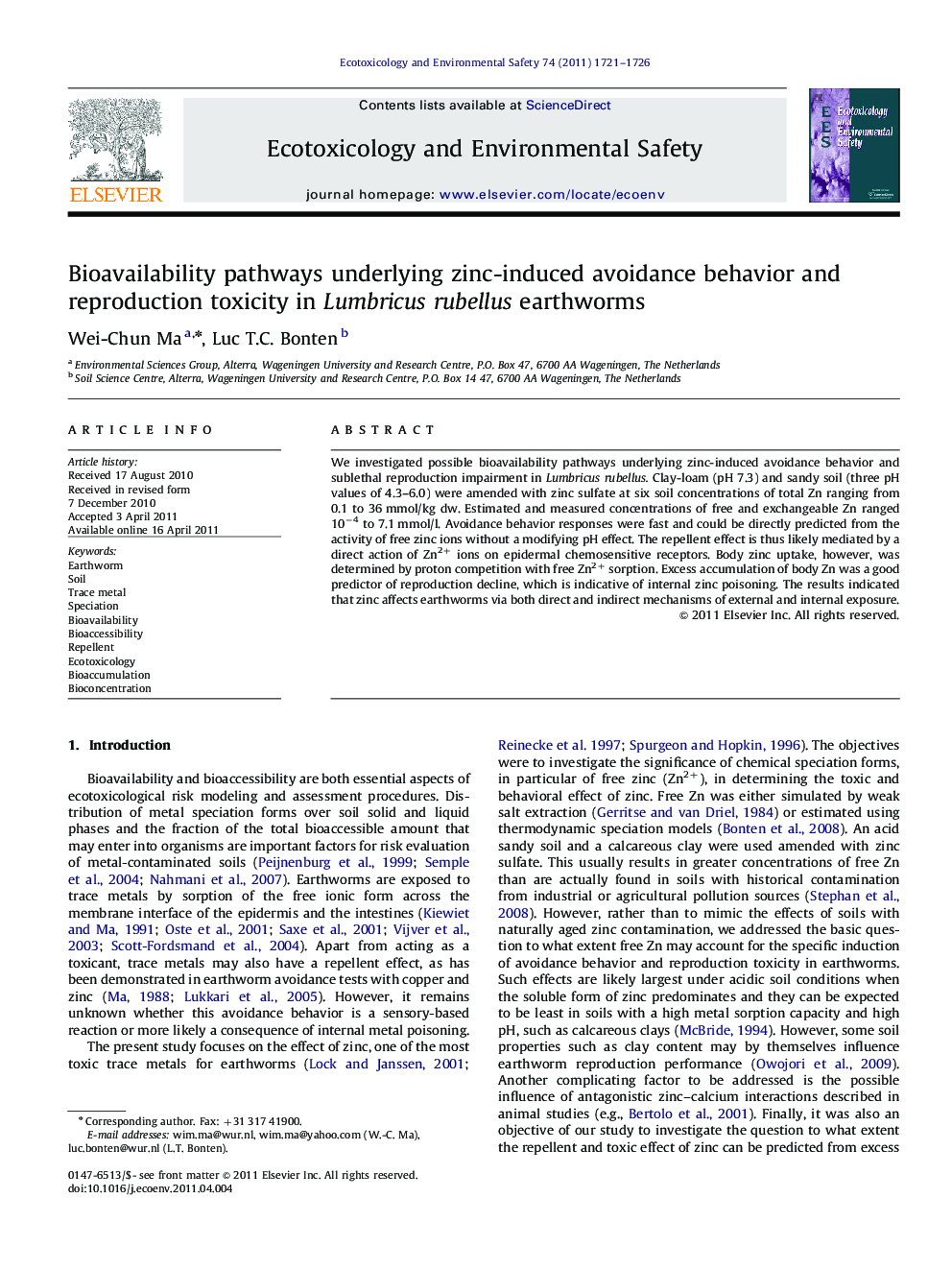| Article ID | Journal | Published Year | Pages | File Type |
|---|---|---|---|---|
| 4421109 | Ecotoxicology and Environmental Safety | 2011 | 6 Pages |
We investigated possible bioavailability pathways underlying zinc-induced avoidance behavior and sublethal reproduction impairment in Lumbricus rubellus. Clay-loam (pH 7.3) and sandy soil (three pH values of 4.3–6.0) were amended with zinc sulfate at six soil concentrations of total Zn ranging from 0.1 to 36 mmol/kg dw. Estimated and measured concentrations of free and exchangeable Zn ranged 10−4 to 7.1 mmol/l. Avoidance behavior responses were fast and could be directly predicted from the activity of free zinc ions without a modifying pH effect. The repellent effect is thus likely mediated by a direct action of Zn2+ ions on epidermal chemosensitive receptors. Body zinc uptake, however, was determined by proton competition with free Zn2+ sorption. Excess accumulation of body Zn was a good predictor of reproduction decline, which is indicative of internal zinc poisoning. The results indicated that zinc affects earthworms via both direct and indirect mechanisms of external and internal exposure.
